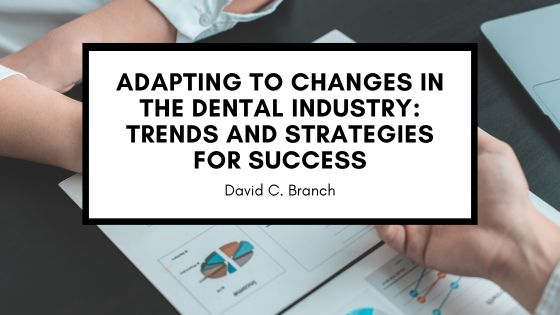The dental industry is undergoing significant changes driven by technological advancements, evolving patient expectations, and shifts in healthcare delivery. This article explores key trends shaping the dental landscape and provides strategies for dental professionals to adapt and thrive in this dynamic environment.
The dental industry, like many others, is experiencing transformative changes that require practitioners to adapt to emerging trends. From technological innovations to evolving patient preferences, this article delves into the shifts in the dental landscape and strategies for success in an ever-changing industry.
- Embracing Technological Advancements: Technology is revolutionizing dental care, from diagnostic tools to treatment methods. Incorporating digital imaging, CAD/CAM technology, and teledentistry into practice not only enhances precision but also improves patient experiences. Embracing these advancements positions dental practices at the forefront of innovation.
- Shifting Patient Expectations: Patients today are more informed and seek a personalized, convenient dental experience. Dental professionals need to understand and adapt to these changing expectations, focusing on patient-centric approaches. Enhanced communication, transparent treatment plans, and flexible scheduling contribute to patient satisfaction and loyalty.
- Telehealth and Teledentistry: The rise of telehealth, accelerated by global events, has impacted dental care as well. Teledentistry offers opportunities for virtual consultations, follow-ups, and education. Incorporating these remote services expands the reach of dental practices and accommodates patients who value convenience.
- Preventive and Holistic Dentistry: There’s a growing emphasis on preventive and holistic approaches to dental care. Dental professionals are encouraged to educate patients on maintaining oral health proactively, emphasizing the connection between oral health and overall well-being. This shift aligns with a broader trend toward wellness-centered healthcare.
- Sustainable Dentistry Practices: Increasing awareness of environmental concerns is prompting dental practices to adopt eco-friendly and sustainable practices. From minimizing waste to using environmentally friendly materials, sustainable dentistry aligns with the values of environmentally conscious patients and contributes to the practice’s positive image.
- Data Security and Privacy Compliance: As the dental industry becomes more reliant on digital technologies, ensuring the security and privacy of patient data is paramount. Implementing robust cybersecurity measures and complying with data protection regulations are essential for maintaining trust and safeguarding sensitive information.
- Continuous Professional Development: With the pace of change in the dental industry, continuous learning is crucial for staying relevant. Dental professionals should prioritize ongoing education to stay informed about the latest techniques, technologies, and industry best practices, ensuring the delivery of high-quality care.
- Diversification of Services: To meet the diverse needs of patients and stay competitive, dental practices are diversifying their services. Integrating cosmetic dentistry, orthodontics, or specialized treatments expands the practice’s offerings, attracting a broader patient base and enhancing revenue streams.
- Collaboration and Networking: In a changing healthcare landscape, collaboration is key. Dental professionals can benefit from collaborating with other healthcare providers, participating in professional networks, and engaging with the community. Building strong relationships fosters a supportive environment and opens avenues for referrals.
- Flexibility in Practice Management: Adaptable practice management is essential for navigating uncertainties. From flexible scheduling to telecommuting options for administrative staff, fostering adaptability ensures the smooth operation of the practice despite unforeseen challenges.
Summarizing the transformative trends in the dental industry and the strategies dental professionals can adopt to thrive amid change. By embracing technology, prioritizing patient-centric care, and staying agile, dental practices can position themselves for success in an evolving landscape.

